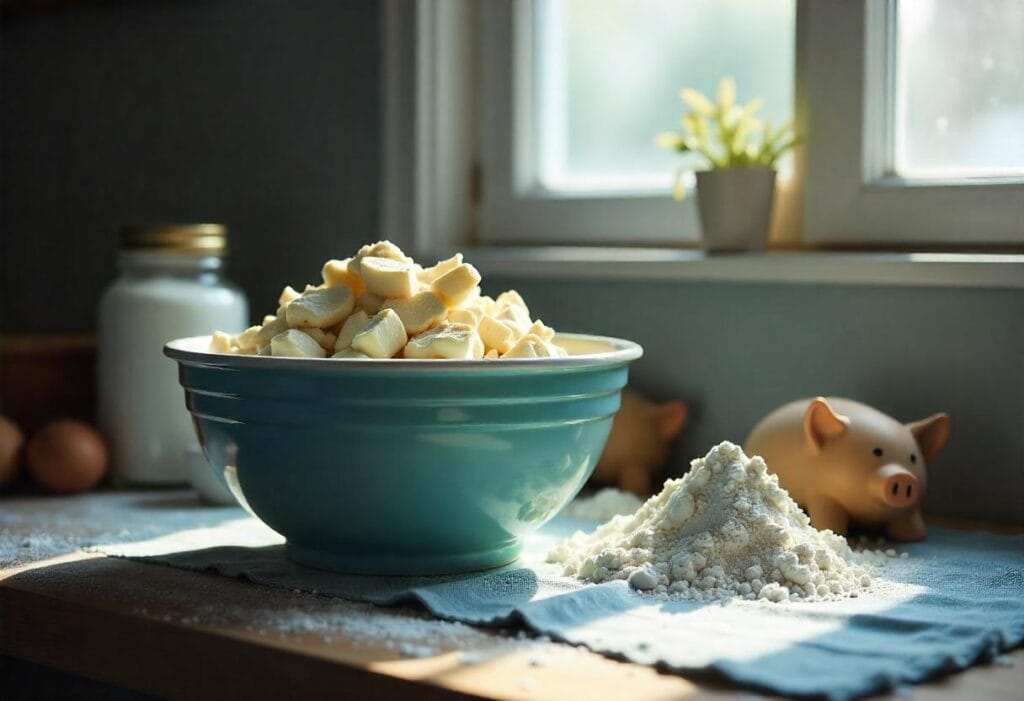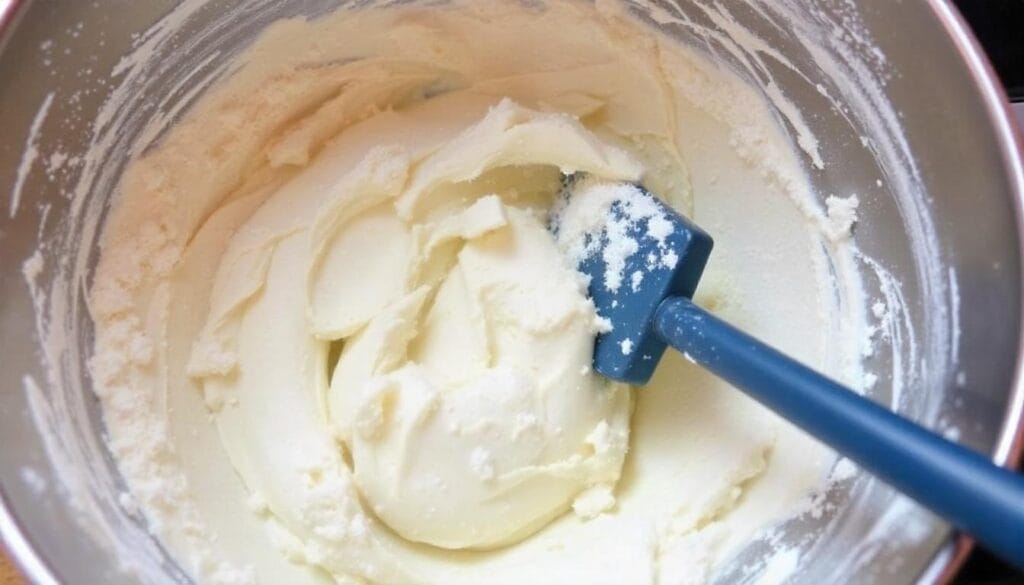If you’ve ever tried making cottage cheese flatbread and ended up with a soggy, less-than-perfect result, you’re not alone. Why is my cottage cheese flatbread soggy? is a common question that many home cooks ask when their flatbread doesn’t turn out as expected. But don’t worry! In this article, we’ll dive deep into the reasons why your cottage cheese flatbread might not be turning out right and give you practical solutions to fix it. Whether you’re a beginner or a seasoned cook, we’ll help you achieve the perfect flatbread every time. Let’s get into it!
Introduction: The Mystery of Soggy Cottage Cheese Flatbread
Cottage cheese flatbread is a delicious, protein-packed treat that combines the fluffy texture of flatbread with the creamy goodness of cottage cheese. It sounds perfect, right? Well, it should be, but sometimes, despite all your best efforts, the flatbread turns out soggy.
The texture of your flatbread is key to its success. When you think of flatbread, you likely envision something light, slightly crispy, and soft on the inside. If it turns out soggy, it’s usually due to excess moisture or improper preparation.
So, why does cottage cheese flatbread get soggy? There are a few common culprits, but luckily, all of them can be solved with the right technique. We’ll walk through these issues and provide easy-to-follow solutions, so your next batch of cottage cheese flatbread will be fluffy and perfect.
What Makes Cottage Cheese Flatbread So Special?
Cottage cheese flatbread is special for a few reasons. First, it’s incredibly nutritious—packed with protein, low in carbs, and a great source of calcium. Cottage cheese adds a unique tanginess to the dough, and it gives the flatbread a soft, pillowy texture that’s hard to replicate with regular flatbread recipes.
But the challenge with cottage cheese flatbread comes down to balancing the moisture. Cottage cheese, being a high-moisture ingredient, can easily cause the dough to become too wet, leading to that soggy, disappointing texture.
Understanding Cottage Cheese Flatbread: Key Ingredients and Preparation
To really get to the bottom of why cottage cheese flatbread can be soggy, we need to break down the key ingredients and how they interact in the dough.
What Goes Into Cottage Cheese Flatbread?
At its core, cottage cheese flatbread is made from just a few simple ingredients:
- Cottage cheese: The star ingredient that provides moisture and protein.
- Flour: The structure of the flatbread, giving it its base.
- Baking powder: To help the dough rise and create a fluffy texture.
- Salt: For seasoning.
Sometimes, recipes include additional ingredients like olive oil, yogurt, or herbs to enhance the flavor. But the four key ingredients are usually enough to get started.

The Role of Cottage Cheese in the Dough
The high moisture content of cottage cheese is what gives flatbread its soft and tender texture. However, if there’s too much moisture, it can result in a dough that’s difficult to work with. Excess moisture can also cause the flatbread to collapse or remain too wet after cooking, which leads to sogginess.
While cottage cheese helps create a rich, creamy texture, you need to strike the right balance between moisture and flour to prevent the dough from becoming too sticky or runny. The key is to control the amount of cottage cheese and moisture you add to the dough. You don’t want the dough to be so wet that it can’t hold its shape when rolled out.
Block Quote:
« Cottage cheese flatbread is a perfect combination of fluffiness and richness, but only when the moisture content is balanced just right! » 🌟
The Impact of Flour and Other Ingredients on Texture
If you’re still asking yourself, why is my cottage cheese flatbread soggy, it could be due to incorrect mixing, undercooking, or the wrong flour. Different types of flour can absorb moisture differently, so if you’re using whole wheat flour, gluten-free flour, or even different types of all-purpose flour, you might notice slight variations in how much liquid the dough can handle.
If you’re making cottage cheese flatbread with whole wheat flour, for instance, the dough might be slightly denser and require more moisture. On the other hand, gluten-free flours often absorb more liquid, and you may need to adjust your recipe to avoid a dry, crumbly flatbread.

Why Is My Cottage Cheese Flatbread Soggy? Common Causes
One of the main reasons why your cottage cheese flatbread is soggy could be an excess of moisture in the dough. Cottage cheese, being a high-moisture ingredient, can cause this
Too Much Cottage Cheese: How It Affects the Dough
One of the most common reasons cottage cheese flatbread turns soggy is because too much cottage cheese is used. Cottage cheese has a high water content, and if you add too much, the dough can become overly wet and difficult to handle. The excess moisture can also result in a flatbread that doesn’t hold its shape during cooking.
Solution:
To fix this, try reducing the amount of cottage cheese in your recipe. If you’re using a standard recipe, start by cutting back on the cottage cheese by 1-2 tablespoons. You can also drain the cottage cheese a bit before using it to reduce its moisture content.
The Role of Wet Ingredients and How to Control Moisture
Excess moisture in the dough is often the result of using wet ingredients like yogurt, milk, or even too much cottage cheese. When there’s too much liquid, the dough becomes sticky and unmanageable, which leads to a soggy flatbread.
Solution:
- Use less liquid: If you’re adding yogurt or other liquids, cut back a little. You only need enough liquid to form a dough that holds together.
- Drain cottage cheese: If you’re using store-bought cottage cheese, it’s often packed with liquid. Try draining it before adding it to the dough.
Over-Mixing or Under-Mixing the Dough
Another factor that can lead to soggy flatbread is over-mixing or under-mixing the dough. When you over-mix, you can create too much gluten, making the dough tough and dense. On the other hand, under-mixing the dough can result in uneven moisture distribution, which might cause some parts of the flatbread to turn soggy while others are dry.
Solution:
Mix the dough until just combined. You want it to come together into a soft dough that’s not too sticky or dry. Don’t knead it too much—just enough to bring the ingredients together.
How to Prevent Soggy Cottage Cheese Flatbread: Tips and Tricks
So, how do you prevent soggy cottage cheese flatbread in the first place? Here are some key tips to help you achieve the perfect texture every time.
Adjusting the Amount of Cottage Cheese in the Dough
As mentioned earlier, too much cottage cheese can make the dough too wet. A good rule of thumb is to use about 1 cup of cottage cheese for every 1 1/2 cups of flour. If you find that your flatbread is too soggy, reduce the cottage cheese slightly or try draining it.
Using the Right Flour for a Better Texture
The type of flour you use can make a big difference in the final texture of your flatbread. All-purpose flour works well in most recipes, but if you’re using whole wheat or gluten-free flour, you may need to adjust the amount of liquid. Experiment with different types of flour to see which one gives you the best results.
Tip:
If you’re using gluten-free flour, try using a flour blend specifically designed for baking, as this will give the best results for texture and moisture control.
Properly Mixing the Dough for the Right Consistency
Improper mixing can also lead to sogginess. So, if you’re asking yourself, why is my cottage cheese flatbread soggy, it could be because you’re over-mixing the dough. The dough should hold its shape but not be overly stiff or too sticky.
Block Quote:
« Achieving the right dough consistency is key to preventing soggy flatbread. Aim for a soft, slightly sticky dough that’s easy to work with! » 💪
Nutrition Facts for Cottage Cheese Flatbread (Per Serving)
| Nutrient | Amount |
|---|---|
| Calories | 140 |
| Protein | 9g |
| Carbohydrates | 20g |
| Fat | 4g |
| Fiber | 2g |
| Sugars | 3g |
How to Fix Soggy Cottage Cheese Flatbread After It’s Made
Sometimes, despite your best efforts, your cottage cheese flatbread can still end up soggy. Don’t worry, though—there are several ways to fix soggy flatbread after it’s been made, and with a little effort, you can still salvage it.
Re-Cooking or Reheating the Flatbread to Improve Texture
One of the easiest ways to fix soggy flatbread is to re-cook it. Whether you baked it or pan-cooked it, you can always give it another go on the stove or in the oven to dry it out and restore its texture.
Solution:
- Stovetop Method: Heat a skillet over medium heat and place the soggy flatbread in the pan. Let it cook for 2-3 minutes on each side. The direct heat will help to crisp up the exterior while drying out the moisture inside.
- Oven Method: Preheat your oven to 350°F (175°C) and place the flatbread on a baking sheet. Bake for 5-10 minutes until it becomes crisp again.
Re-cooking the flatbread will help remove excess moisture and bring back that golden, crispy texture. You might need to flip it a couple of times, but with the right heat, your flatbread should become much less soggy.
Adding Crispness: How to Fix a Soggy Flatbread
If you’re dealing with a flatbread that’s more soggy than you’d like, a good way to fix it is to add crispness to the edges. This can be done by either toasting or pan-frying the flatbread after it’s been made.
Solution:
- Pan-frying: Heat a bit of oil in a non-stick pan. Once the oil is hot, place your flatbread in the pan and cook for 2-3 minutes on each side. The oil will crisp up the dough, adding a pleasant crunch.
- Toasting: You can also toast the flatbread in a toaster or under the broiler for a couple of minutes. This method is quicker but still effective in restoring crispness.
These methods will add that satisfying texture to the outside of the flatbread, while the inside stays soft and delicious.
The Best Ways to Store Cottage Cheese Flatbread to Maintain Crispness
If you’ve already made your cottage cheese flatbread and want to store it, there are ways to keep it from getting soggy. Storing it properly is key to maintaining its texture.
Solution:
- Cooling and Storing: After making your flatbread, let it cool completely on a wire rack. This prevents moisture from building up underneath it. Once cooled, store it in an airtight container at room temperature for up to 2 days.
- Freezing for Later: If you need to store it for a longer period, freezing is the best option. Place the flatbread in a freezer-safe bag or container after it has completely cooled. To reheat, simply pop it in the oven for 10 minutes at 350°F (175°C).
By following these storage methods, you can ensure that your flatbread maintains its texture and doesn’t get soggy later on.
Variations to Try: How to Make Cottage Cheese Flatbread Less Soggy
If you find that your cottage cheese flatbread is still too soggy despite following all the tips, it may be worth experimenting with a few variations in the recipe. These variations can help reduce moisture and create a more stable dough.
Using a Thicker Cottage Cheese for Better Results
One of the easiest variations is to choose a thicker cottage cheese. Cottage cheese comes in various consistencies, from very wet to relatively thick. Opting for a thicker variety will reduce the moisture content in your flatbread, preventing it from becoming too soggy.
Solution:
Look for cottage cheese with a higher fat content (usually labeled as « small curd » or « thick and creamy ») for better results. These types will absorb less moisture and help keep your flatbread light and fluffy without being soggy.
Experimenting with Alternative Flours and Ingredients
Another approach is to experiment with different flours. Whole wheat flour or gluten-free flour might require adjustments in the amount of liquid, as they absorb moisture differently than all-purpose flour.
Solution:
- Whole wheat flour can make the flatbread denser, so you might need less cottage cheese or additional flour.
- Gluten-free flour can sometimes make the dough a bit too soft, so adjusting the ratio of flour and liquid is key to preventing sogginess.
Adding oats or almond flour as part of your flour blend can also help reduce moisture retention and give the flatbread a firmer texture.
Using a Different Cooking Method: Baking vs. Pan-Frying
Another way to avoid soggy flatbread is to change your cooking method. While baking is common, pan-frying can help remove moisture more effectively by providing direct heat to the dough’s surface.
Solution:
If you typically bake your cottage cheese flatbread, try pan-frying it instead. Use a non-stick pan with a small amount of oil over medium heat, flipping the flatbread after 2-3 minutes. This method will help the flatbread crisp up more evenly and reduce sogginess.
Common Mistakes to Avoid When Making Cottage Cheese Flatbread
When making cottage cheese flatbread, there are a few mistakes that can lead to sogginess. Let’s go over the most common ones and how to avoid them.
Overloading the Flatbread with Fillings or Toppings
While it’s tempting to load your flatbread with all sorts of delicious fillings, too many toppings can weigh it down and make it soggy. This is especially true if you’re using watery ingredients like tomatoes or cucumbers.
Solution:
Keep the toppings light, especially if you’re planning to eat the flatbread shortly after making it. Consider adding toppings like grilled vegetables, cheese, or hummus that don’t release too much moisture.
Using the Wrong Type of Cottage Cheese
Not all cottage cheese is the same. Some varieties have more moisture than others, and if you use a very wet type, your dough will absorb more liquid and become soggy.
Solution:
Look for small curd or thick cottage cheese for the best results. If using larger curds, consider draining the cottage cheese to remove excess liquid.
Not Adjusting the Cooking Time or Heat Level
Another mistake is not cooking your flatbread at the right temperature or for the right amount of time. If the heat is too low, the flatbread will cook slowly, absorbing moisture and becoming soggy. If the heat is too high, it may burn on the outside while remaining raw and soggy on the inside.
Solution:
Cook your flatbread over medium heat, flipping it once the bottom is golden brown and firm. Keep the heat consistent to ensure even cooking.
Cottage Cheese Flatbread Pairings: How to Serve It Without the Soggy Texture
Cottage cheese flatbread pairs well with a variety of meals and can serve as a filling snack, appetizer, or even a light meal. Here are some pairing ideas to enjoy your flatbread without worrying about sogginess.
Ideal Accompaniments for Cottage Cheese Flatbread
- Dips: Try pairing your flatbread with dips like hummus, guacamole, or a yogurt-based dip for a tasty treat.
- Grilled Meats: Flatbread makes a great base for grilled chicken, lamb, or beef. The grilled meats will complement the soft texture of the flatbread without making it soggy.
- Salads: Pairing flatbread with fresh salads, such as a Greek salad, can balance out the richness of the bread.
Using Cottage Cheese Flatbread as a Base for Dips, Wraps, and More
Cottage cheese flatbread is a fantastic base for wraps. Try filling it with grilled vegetables, cheese, and dressing for a quick, satisfying meal. You can also use it as a base for flatbread pizzas or top it with your favorite spreads and serve it as an appetizer.
Nutrition Facts for Cottage Cheese Flatbread (Per Serving)
| Nutrient | Amount |
|---|---|
| Calories | 150 |
| Protein | 9g |
| Carbohydrates | 20g |
| Fat | 4g |
| Fiber | 2g |
| Sugars | 3g |
Frequently Asked Questions (FAQ) About Cottage Cheese Flatbread
Can I Make Cottage Cheese Flatbread Without It Turning Soggy?
Yes, by following the right recipe, adjusting the moisture content, and using proper cooking techniques, you can make perfect cottage cheese flatbread without it turning soggy.
Can I Use Non-Dairy Cottage Cheese to Make Flatbread?
Yes, non-dairy cottage cheese, like tofu-based cottage cheese, can be used as a substitute. However, keep in mind that the texture may vary.
How Do I Know When Cottage Cheese Flatbread Is Done Cooking?
Your cottage cheese flatbread is ready when it is golden brown on both sides and firm to the touch. You can also test it with a toothpick to ensure it’s cooked through.
Conclusion: Mastering the Perfect Cottage Cheese Flatbread
Next time you wonder, why is my cottage cheese flatbread soggy, remember these simple fixes and enjoy perfectly fluffy, delicious flatbread every time!. From adjusting the amount of cottage cheese to experimenting with different cooking methods, there are plenty of ways to perfect your flatbread. So, go ahead and make your next batch with confidence—you’ve got this! 😊

